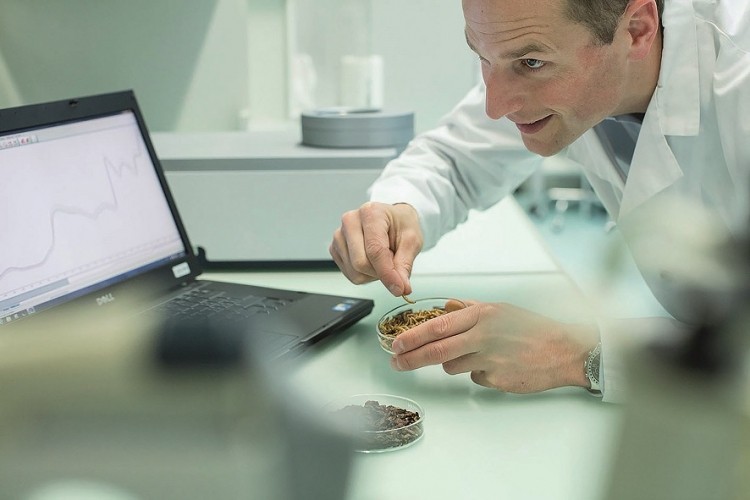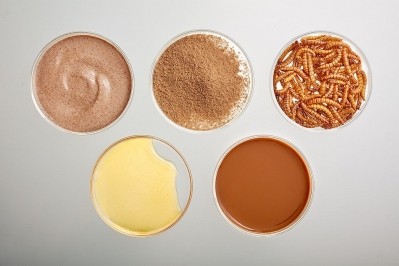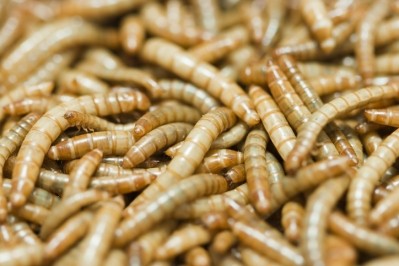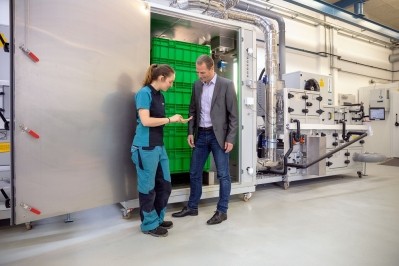‘Mealworm production can offer an alternative revenue stream for livestock producers’

It has started a project with a farmer in the Netherlands, who had already worked on the concept of producing yellow mealworm (Tenebrio molitor) at an old pig farm. Bühler is supporting that project, in terms of the design, installation and commissioning of a complete automated and hygienic mealworm production facility at a 2,300 square-meter site.
“Mealworm [production] can offer an alternative revenue stream for livestock producers,” said Andreas Aepli, CEO Bühler Insect Technology Solutions.
Livestock production, especially the pig industry, is under a lot of pressure because the already tight margins continue to decline – in Europe, but also in Australia, said Bühler, citing case studies in Germany, Ireland and the UK as well as down under.
“In general, it can be said that the volatilities in feed prices and pig farm gate prices cause uncertainty among farmers, which makes them look for alternatives," continued Aepli.
Bühler stressed that the number of pig producers that have already de-stocked or are leaving the industry completely is rising. Those farmers are now looking for alternative but more sustainable businesses, in which they can leverage their animal farming skills, added the group.
It said its technology can be readily integrated into existing farms, but larger-scale facilities can also be realized.
Another interesting aspect of mealworm farming is the resource use, said the company. “Mealworms can grow on by-products such as wheat bran and rice husks.”
When asked what the risks are in converting farm buildings for mealworm production, Aepli told FeedNavigator that a detailed risk analysis will form part of the Bühler pilot mealworm production project.
“While we intend to re-use existing buildings, we would make significant modifications to the inside to ensure a hygienic rearing environment. By implementing good manufacturing practices (GMP), we ensure hygienic zoning inside the building to prevent cross contamination between raw and finished products and we will establish barriers to prevent the entry of pests and other hazards from the external environment.”
Bühler talked up the food application opportunities for mealworms, citing their nutritional value including the protein, fatty acid, vitamin, mineral and dietary fiber content, but what about feed ingredient application?
“As a technology provider we do not exclude the use of mealworms for feed applications and fully support a successful introduction of this product into feed. But we also see a rising demand in mealworms for food, which would make smaller-scale production, as intended in our project, possible,” said Aepli.
Ÿnsect’s mealworm-based production model
Where many insect producers have chosen to base their production on the Black Solder Fly (BSF), French company, Ÿnsect, is producing ingredients from mealworms.
In June it announced that it had won €20m backing from the EU Commission towards the launch of its fully automated industrial facility. That plant is set to be on stream in early 2021.
Ÿnsect is positioning its ingredients as premium. It will target the fish feed, pet food and fertilizers sectors in the short-term.
CEO Antoine Hubert told us previously that the feedstock for rearing mealworms can be made up of a lot of different ingredients, which allows the company flexibility in sourcing.
The mealworm that Ÿnsect uses is a gregarious and nocturnal species, which make its farming easier, said the company. It brings benefits in terms of the process, the scalability, said the CEO.
“We tested a range of insect species back in 2013 - the flies, the locusts and the crickets - and we found out the mealworm, even though they grow more slowly than flies, are more adapted to very large-scale production, in terms of enabling automation throughout the life cycle. Harvesting, etc., is much easier with non-flying insects."
Enabled by deep tech, the entire ŸnMeal production process will be automated, from feeding to controlling the health and welfare of the insects, to quality control and to harvesting the mature insects: “Heat emission is key in the business and the Molitor also has a much better performance in comparison to other insects in relation to this.”
In terms of FCR, the mealworm converts very efficiently as well, said the CEO.
Washington-based startup expanding production of mealworms
But Ÿnsect is not the only insect feed producer flying the flag for the use of mealworm larvae.
In May this year, we reported on how US producer, Beta Hatch, was moving to a new location to set up its flagship production facility in the Wenatchee region of Washington state and ensure the company’s long-term growth.
The startup has been focusing on developing and expanding the production of mealworms to provide an alternative source of protein for use in animal feed.
The company had won $135,000 in funding and prizes, which was to go towards the move and scale up efforts, said Virginia Emery, Beta Hatch founder.
“We’re really excited for the next phase of our growth, which is to build our flagship commercial facility,” she told told us back then.
The company had a production facility in the Seattle area, but the flagship facility was expected to increase Beta Hatch’s insect production by about 30 times, said Emery. The amount of insect-based protein generated could grow from about a ton a week to closer to a ton day.














